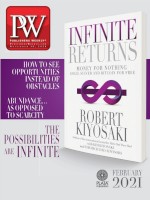In Pure America (Belt, Feb.), historian Catte examines the legacy of the eugenics movement in Virginia.
Why did you choose to focus on your hometown of Staunton, Va., and Western State Hospital?
When I first moved to Staunton [in 2016], I lived right up the road from Western State, which performed the second-highest number of forced sterilization procedures in Virginia between 1927 and 1974. I observed the transformation of this derelict campus and the land into what our current city boosters call “a luxury development.” I watched as this development, intentionally or not, shed some of its more disturbing associations with the eugenics movement. As a historian, the idea that it could be taboo to talk about eugenics at a place with these strong and obvious connections, really fascinated and disturbed me.
You write that the court cases leading up to Buck v. Bell, the Supreme Court decision upholding Virginia’s 1924 sterilization law, were “a legally binding theatrical performance.” How so?
Virginia lawmakers, in solidarity with the national eugenics movement, felt the law needed a strong test to open the door to constitutionally protected eugenics sterilization nationwide. Carrie Buck was selected because she had recently been committed, she was the daughter of someone who had also been committed, and she had an illegitimate daughter—who happened to be the product of a rape. It was thought it would be in the state’s best interest for her to avoid future pregnancies. So it became a sham trial—her legal advocates were all in favor of eugenics sterilization broadly, and specifically in her case.
What happened to Carrie Buck?
The state essentially paroled her to be a domestic worker, offering her to potential employers as someone with a strong back and a weak mind, who was perfect to do drudge work. Physicians and state lawmakers argued that this arrangement was therapeutic. At hospitals like Western State, patients who were labeled “feebleminded” or “unfit” would perform institutional labor, domestic labor, agricultural labor [for no pay]. They helped construct institutional buildings. It’s incredibly difficult to calculate the value of the labor extracted from people like Carrie Buck, but that’s also part of the legacy of eugenics.
And now their absence from the history of a place like Western State allows the state to continue to create value from their labor.
Beautifully put. There are similar conversations happening all over the country, and especially within Virginia, about enslaved labor. So many of the same dilemmas travel through these two histories, including the idea that labor cannot be acknowledged, that the real story is who designed the building. We need to be brave enough to live in a community that recognizes famous architects, but also the people whose labor built those buildings.



 Volume 267
Issue 48
11/30/2020
Volume 267
Issue 48
11/30/2020





